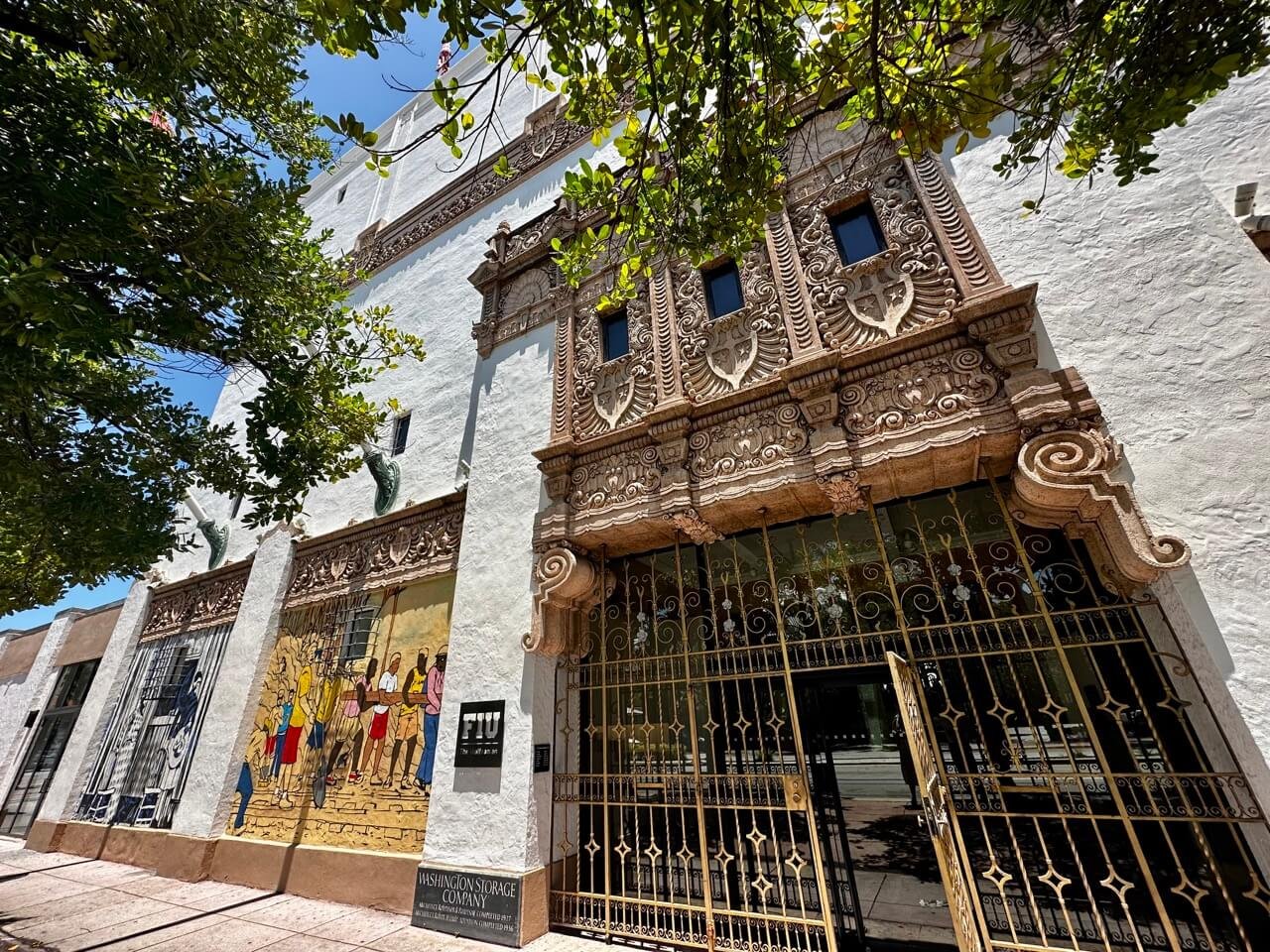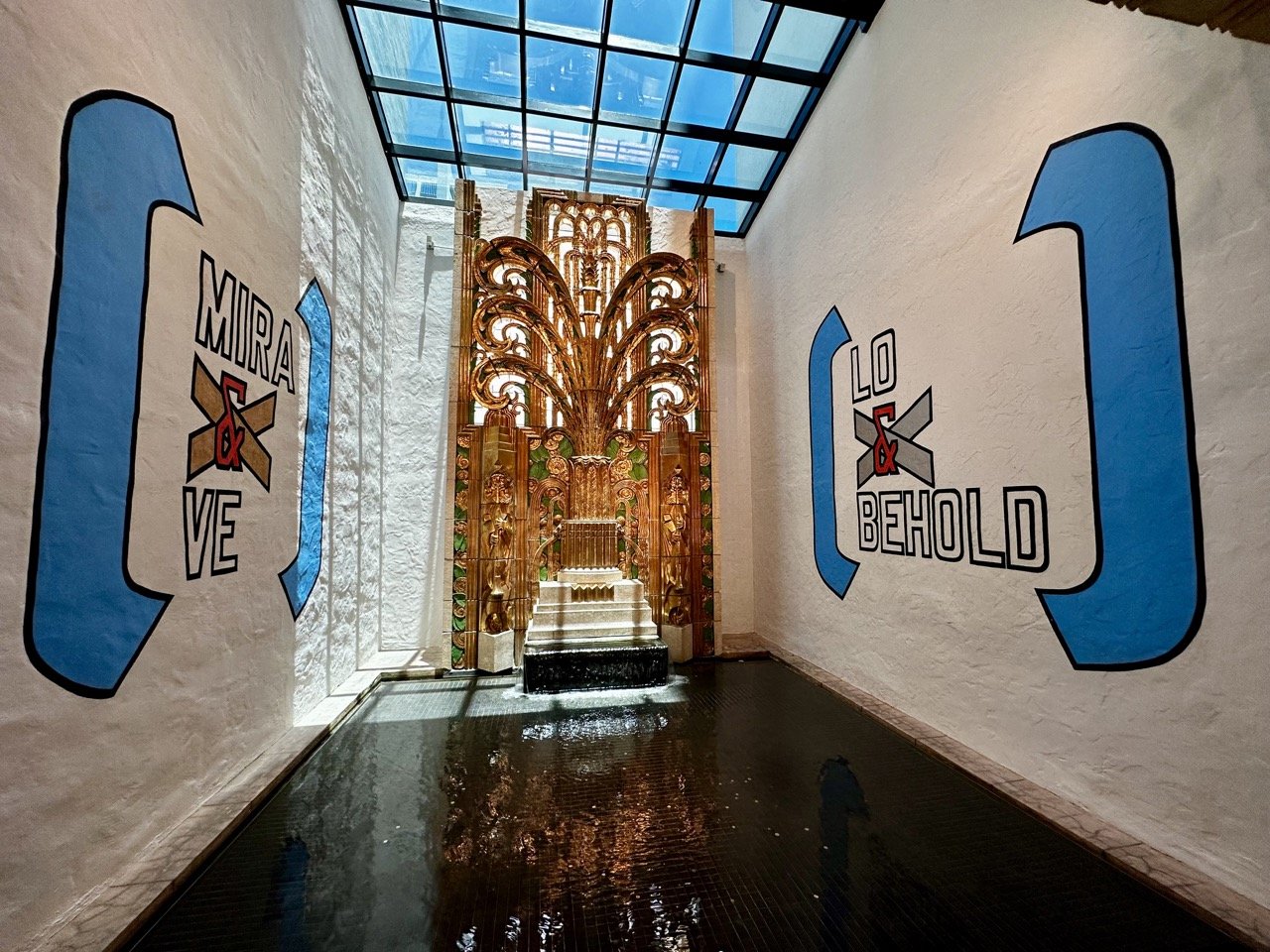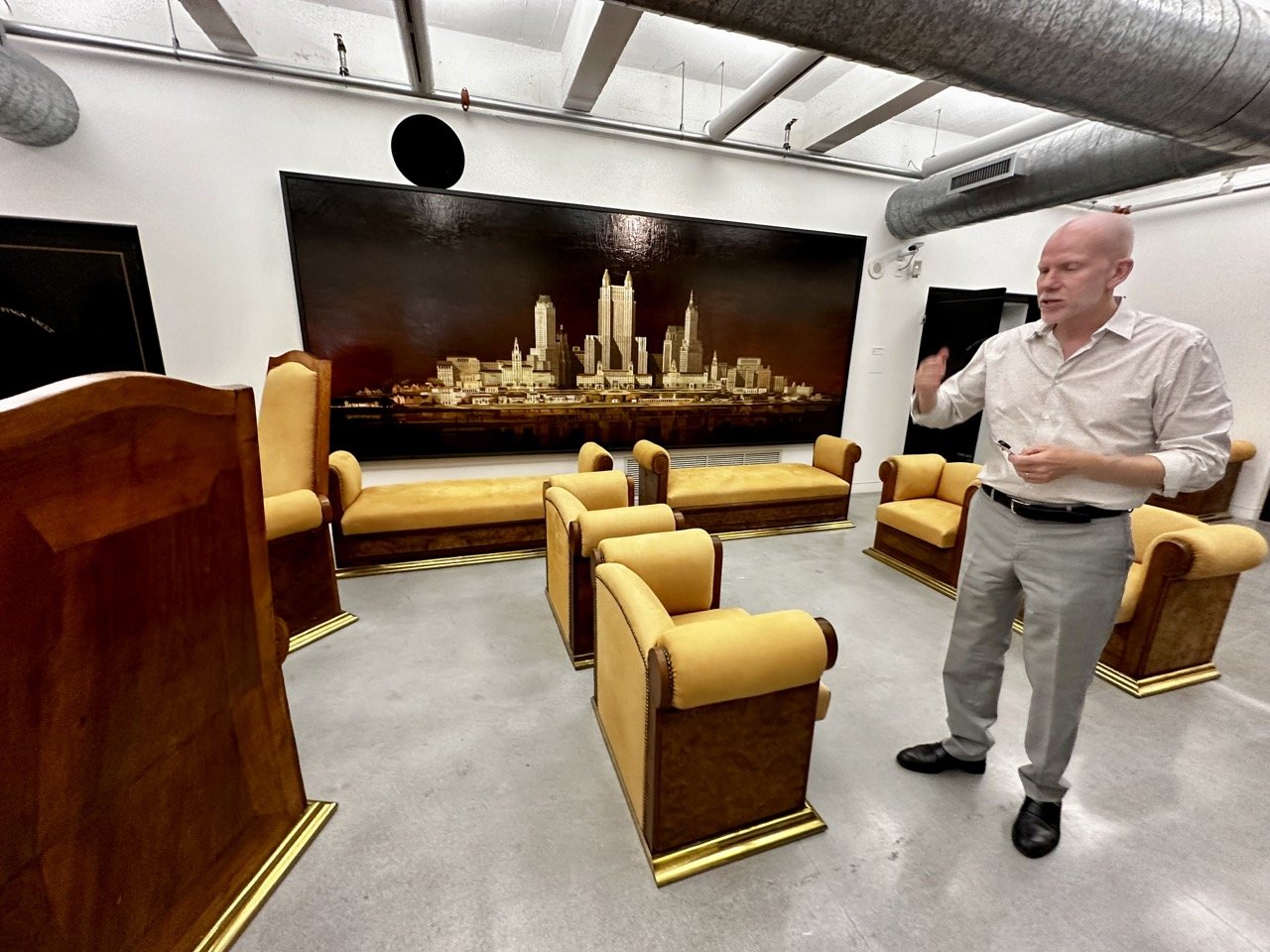Visiting The Wolfsonian: Explore This Striking Museum in Miami Beach's Art Deco District
Some museums aim to preserve (and offer clarity) to the past, but The Wolfsonian is different in that they focus on a particular time period, and the rapid pace of change during said time, in order to encourage visitors to pause and consider where we’re headed, and what agency (and responsibility) we have to affect that path.
Part of the iconic exterior of The Wolfsonian in Miami Beach.
It sounds cliché, but The Wolfsonian really is an institution and museum like no other that we’ve experienced. To summarize what The Wolfsonian aims to do feels like trying to summarize a Dickens novel, but at its core, The Wolfsonian traces the greatest 100 years of growth and change that humanity has experienced, from roughly 1850 to 1950.
They do this with their collection of nearly 200,000 objects - everything from household appliances that made life more efficient to ideas and designs that changed, for better or worse, the way that we thought of life (and what it is to be human) on this planet of ours.
They examine “the odyssey from agrarian to urban, colonial empires to Cold War superpowers, the first spike of the Transcontinental Railroad to the advent of television.”
It would be a mistake, however, to think of the museum as a time capsule for this time period. It’s much more apt to think of The Wolfsonian as a window to the past, in order to be a mirror for the present.
Ian Rand, the Assistant Director of Marketing, Communications + Special Partnerships and Liaison to The Wolfsonian Public Humanities Lab, was gracious enough to take us through the collection. His energy and passion for this place was palpable, and he constantly reiterated that, at its core, The Wolfsonian aims to “connect our collection to what’s going on today.”
They don’t just talk the talk, their exhibitions, partnerships, collaborations and the collection at large, show that they’re walking the walk. Of all the museums that Bri and I had the pleasure of visiting while we were exploring Miami, it was The Wolfsonian that left the most indelible mark on our trip and, ultimately, on our perspective.
As Ian noted - The Wolfsonian is “a documentorium.”
How Did The Wolfsonian Come to Be?
Take note of any art that may be on the exterior of The Wolfsonian!
Today, The Wolfsonian is one of the largest American university art collections (and is technically considered to be one of the seven campuses of FIU nowadays). Let’s trace this now famous museum back to its roots, shall we?
The Wolfsonian is named after Mitchell “Micky” Wolfson Jr., a collector and expert in modern design (as well as Miami native). As The Wolfsonian notes, he was “fascinated by the active role design plays in shaping human experiences, perceptions, and attitudes, established The Wolfsonian in the spirit of his international upbringing and varied collecting taste.”
He began amassing rare books and objects related to design, architecture, and decorative arts in the 1970s. His collection was actually stored at the Washington Storage Company facility until he acquired the building in 1986, founding The Wolfsonian Foundation to manage and share the quickly growing collection.
The Washington Storage Facility, I should add, was originally built in the 1920s in the “Spanish Renaissance” style, which I’m told was a very popular choice at the time in Miami. Two more floors were added in the mid 1930s, and those five floors are now put to good use by the staff at The Wolfsonian.
It was in 1992 that architect Mark Hampton transformed what was a storage building into a beautiful modern museum with galleries, a library, and offices. The museum opened its doors to the public in 1995.
The collection was later gifted to Florida International University (FIU) in 1997. Over the years, the museum received grants, including from the Mellon Foundation and the Knight Foundation, to strengthen ties with FIU and expand access to its collections. I should note here that, in regards to the future, the museum also has plans for renovations and digital initiatives to enhance accessibility, and expand their reach and impact.
Fun fact - The Wolfsonian holds a unique place in history as the first public building to have air conditioning installed.
Mitchell Wolfson, now in his 80s, continues to collect and make plans for his additional holdings to be integrated into the museum's collections.
How to Approach Your Visit to The Wolfsonian
For starters, spend some time outside, taking in the iconic views of the building itself. They typically have exhibits that are on display on the exterior of the museum, and it’s worth taking the time to soak that in before entering.
Bri and I had just taken an Art Deco Walking Tour with the Miami Design Preservation League beforehand, and I’d recommend that approach if you have the time, as our minds were very much primed for design.
We were fortunate enough to have a tour. It’s something they offer, even for private groups, and you’ll be led around by a Wolfsonian staff member. We were incredibly lucky to have Ian by our side, and to be joined later by Michael Hughes (pictured above), the Development Director of the museum, who is a veritable wealth of knowledge when it comes to their collection.
With their plans for expansion, do note that not all floors will necessarily be accesible, but I can still guarantee they’ll be more than enough to pique your interest, regardless of whether or not a particular floor or exhibit is accessible when you’re visiting.
If you want to scope out what’s in The Wolfsonian collection, I’d urge you to explore the collection online. They’ve separated the online experience into Curated Selections (maps, art deco, modern Dutch design etc.), Featured Items (books, art, household items etc.), and Themes (think everything from the World’s Fair to ocean liners).
If digital is indeed your forté, then you’ll also want to take note of their “Digital Experiences.” Personally, before arriving in Miami, I had a glass of wine and checked out their “Aerial Miami” digital experience (run with Google Earth), and thought it was utterly intriguing.
When you arrive, you can start on the bottom floor, then work your way up based on what’s currently showing.
Exhibitions and Installations
We had the chance to set eyes on Roberto Lugo’s thought-provoking collection, Street Shrines. It’s only running until the end of August 2023, but talking about it a little will give you a bit of a picture of what sorts of exhibitions The Wolfsonian prioritizes. Lugo essentially uses historical ceramics, and makes modern versions of them to establish “contemporary urgency.” “At The Wolfsonian, Lugo looks to the museum's significant collection of 19th- and 20th-century European and American ceramics, producing new work inspired by these objects but depicting the histories, experiences, and heroes of Black and Brown communities so often ignored by the historical record.”
We also got the chance to dive into the work of cartoonist Sam Gross in Tyrants and Terrorists: Satirists Bite Back. This exhibit explores the effectiveness of satire in challenging tyrants and terrorists. It draws parallels between anti-Nazi propaganda during World War II and modern cartoons by Sam Gross. Essentially, the exhibit highlights how satire can be a potent tool in countering aggression and extremist symbols. This exhibit will also end at the end of August.
You can see what’s on now and what’s upcoming here.
In terms of the composition of their collection, generally speaking, The United States, Great Britain, Germany, Italy, and the Netherlands are extensively represented, along with materials from Austria, Czechoslovakia, France, Japan, the former Soviet Union, Hungary, and other countries.
Expect to see things such as posters, prints, and design drawings, as well as paintings, sculptures, glassware, textiles, ceramics, lighting and more.
What Else Should You Know About The Wolfsonian?
They’ve also got a Design Store + Coffee Bar with no shortage of design-oriented gifts, Wolfsonian publications, plus a fair amount of exclusive merchandise. If you’re sipping on a coffee, I’d urge you to take note of the 1915 shelving system from Snead & Co. Iron Works.
You may want to time your visit with their events. You can take a look at their upcoming events here.
This isn’t just a museum with the goal of opening the mind of adults. In fact, far from it. They operate STEAM programs as well as “Zines for Progress” to inspire youth to look at the world from a different angle, and help prepare the next generation for the challenges of the future.
Members and Florida residents are free, along with children under 6 and visitors with disabilities and their accompanying caregiver. Adults are $12 at the time of publication, and seniors, students and children 6-18 are $8. Want to make Friday night more fun? They offer “free fridays” from 6-9pm every week.
Hours are Wednesday to Sunday, 10am - 6pm (and Friday until 9pm).
If you’re interested in the Wolfsonian because of its inherent research potential, then you’ll rejoice in the notion that The Wolfsonian Library accounts for more than half of their 200,00 object collection. They’ve got rare books, reference materials, vintage postcards, brochures, calendars, leaflets, and the list goes on and on. It’s open by appointment only, and you can find details on that here.
The Wolfsonian Awaits
The Wolfsonian–FIU employs objects to demonstrate how art and design can persuade, to delve into the concept of modernity, and to narrate the evolution of our society through social, political, and technological shifts.
It inspires individuals to adopt fresh perspectives on the world and to draw lessons from history while actively shaping the present, and being inspired to impact the future. It’s for those reasons that we know that each time we visit Miami, we’ll be back to visit The Wolfsonian.
We want to humbly thank Greater Miami & Miami Beach and The Wolfsonian for hosting us as media. All opinions are our own.







